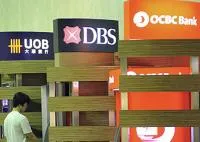
Will bad mortgages put Singaporean banks at risks?
The home supply glut shouldn't be underestimated.
Despite intensifying macroeconomic risks, Singapore's largest banks are likely to remain resilient in 2016, said Fitch Ratings.
Banks will grapple with slower loan growth and higher credit costs this year. Fitch said that cyclical risks in Singapore and other key regional markets are on the rise, mainly on back of a slowing economy and continued volatility in commodity prices.
Fitch also said that it expects the domestic property market to correct further as a large supply of new homes comes on to the market at a time when the economic outlook has become less optimistic. These factors are likely to weigh on banks' asset quality and profitability.
"We expect residential mortgage asset quality to stay resilient in the absence of any significant increase in the unemployment rate. Household balance sheets remain broadly healthy, and macro-prudential measures in recent years have focused on ensuring that households borrow within their means," said Fitch.
A large part of the banks' rapid loan growth since the global financial crisis has been driven by traditionally safer residential mortgages in Singapore and short-term trade loans, where the counterparties are mainly the top five Chinese commercial banks and policy banks, Fitch said.
In terms of corporate lending in mainland China, Singapore banks have mostly targeted the state-owned enterprises and large corporates with stronger balance sheets.
Fitch believes the three local banks are prepared for current macroeconomic headwinds given their high capitalisation ratios, adequate profitability (average core ROE of 11.4% for 2015), reasonable loan-loss reserves (133% as at end-2015), disciplined funding practices and broadly liquid balance sheets. The Singapore dollar liquidity coverage ratio (LCR) for the three Singapore banks stood in excess of 200% at end-2015, with all-currency LCR averaging 129%. Their Singapore dollar loan-deposit ratio was also comfortable, ranging from 84% to 92% at end-2015.




![Lorem Ipsum [ABF 1]](https://cmg-qa.s3.ap-southeast-1.amazonaws.com/s3fs-public/styles/exclusive_featured_article/public/2025-03/a_hand_pointing_to_a_futuristic_technology_5b87c9d0e3_1.png.webp?itok=2w0y1WhS)


![Cross Domain [Manu + SBR + ABF + ABR + FMCG + HBR + ]](https://cmg-qa.s3.ap-southeast-1.amazonaws.com/s3fs-public/styles/exclusive_featured_article/public/2025-01/earth-3537401_1920_4.jpg.webp?itok=WaRpTJwE)







 Advertise
Advertise

